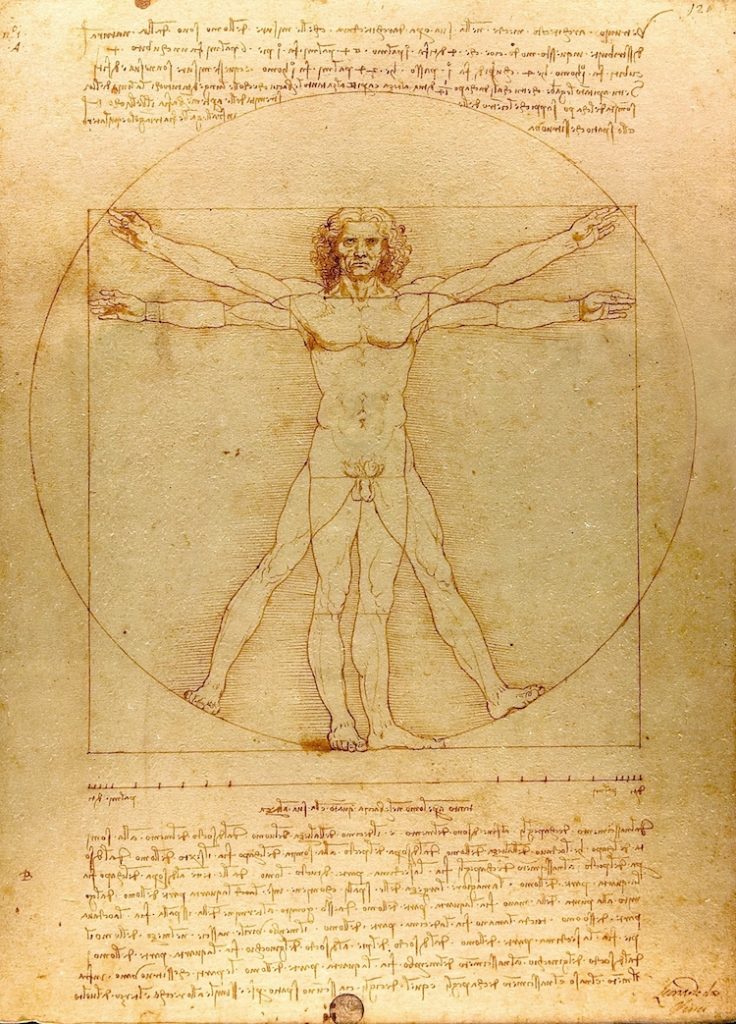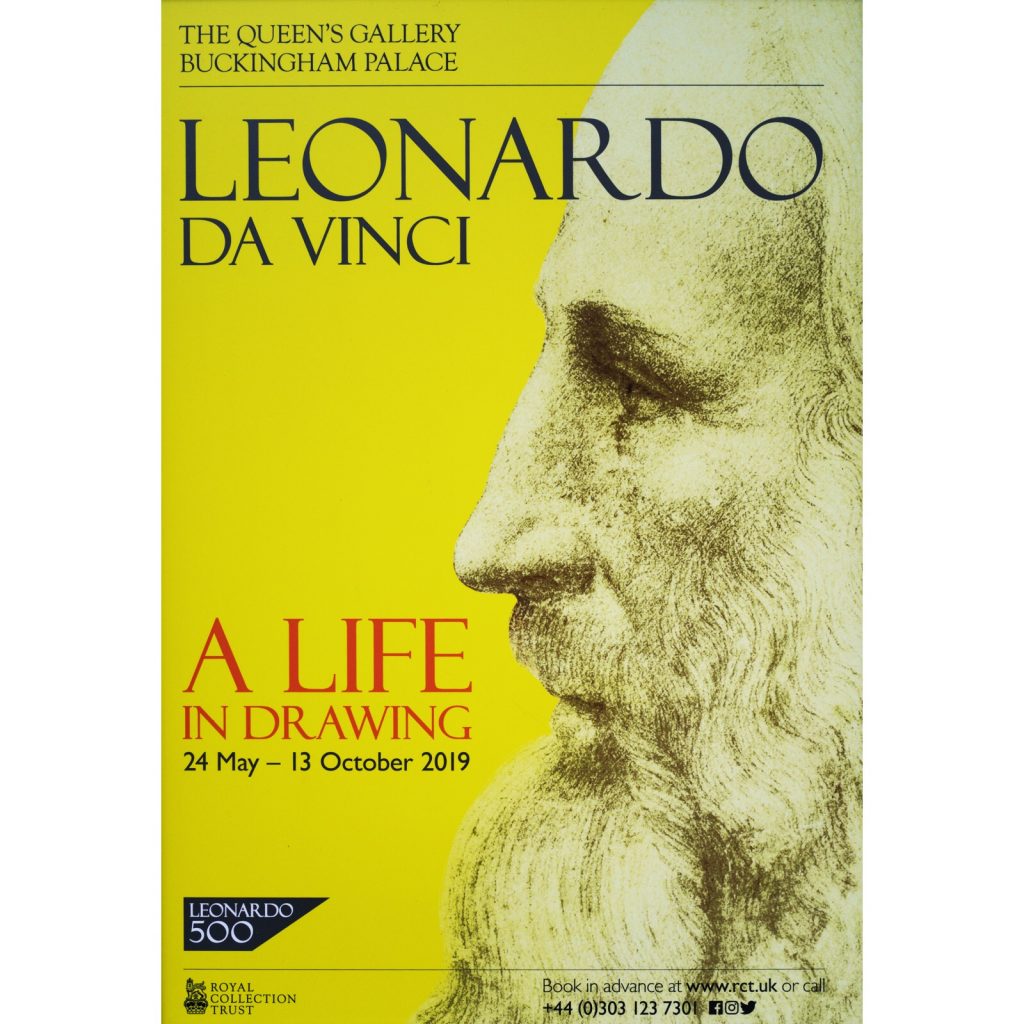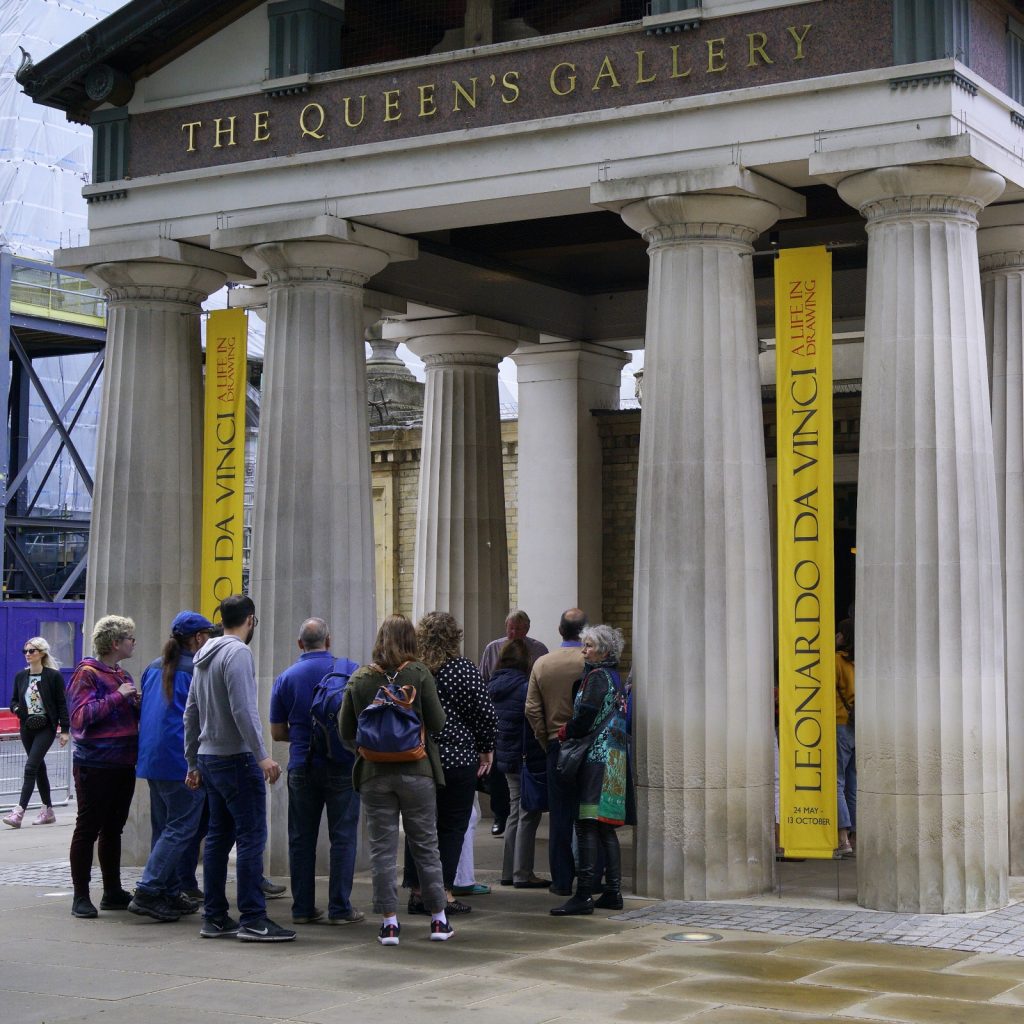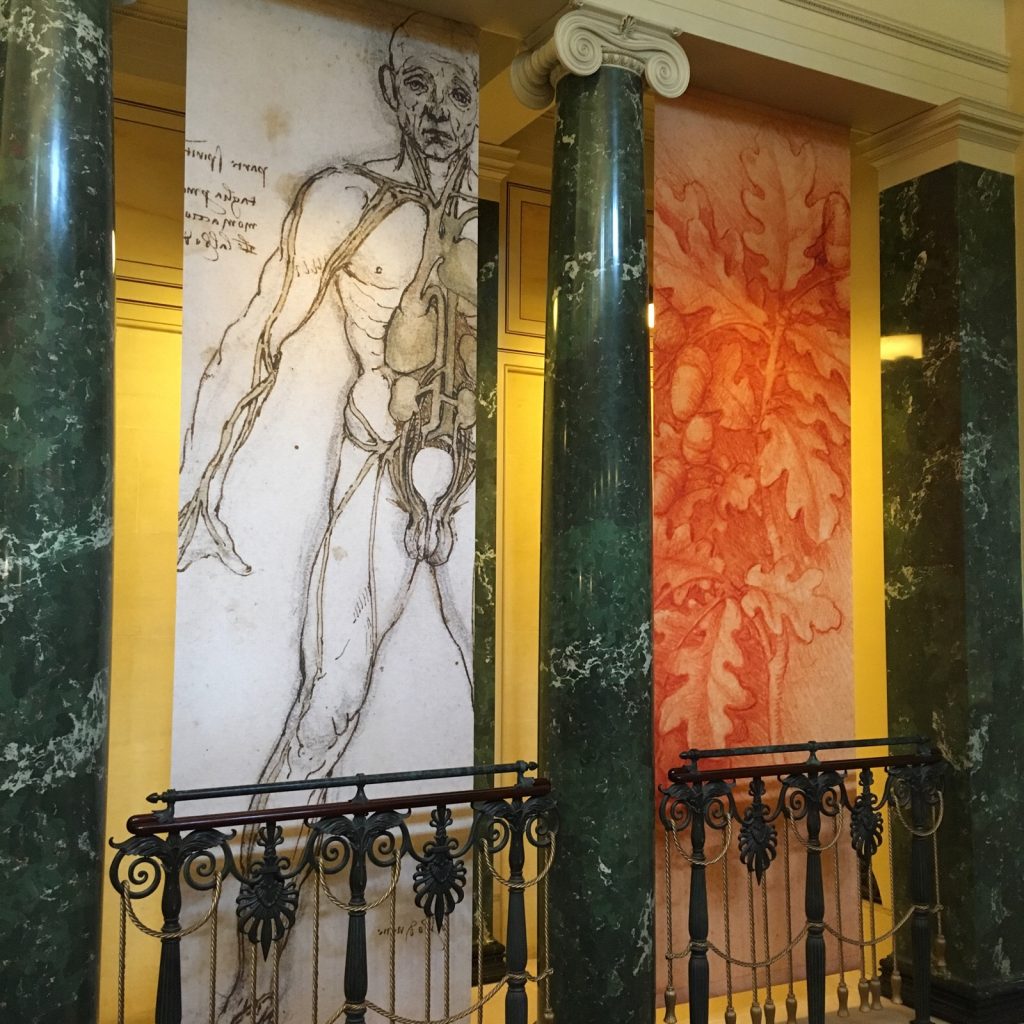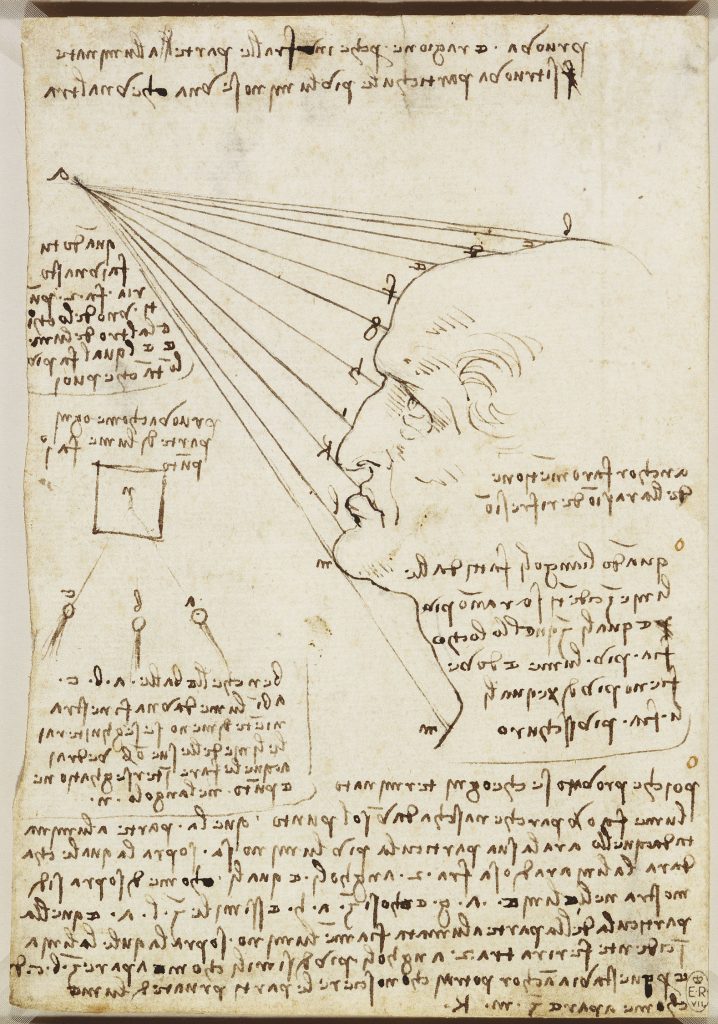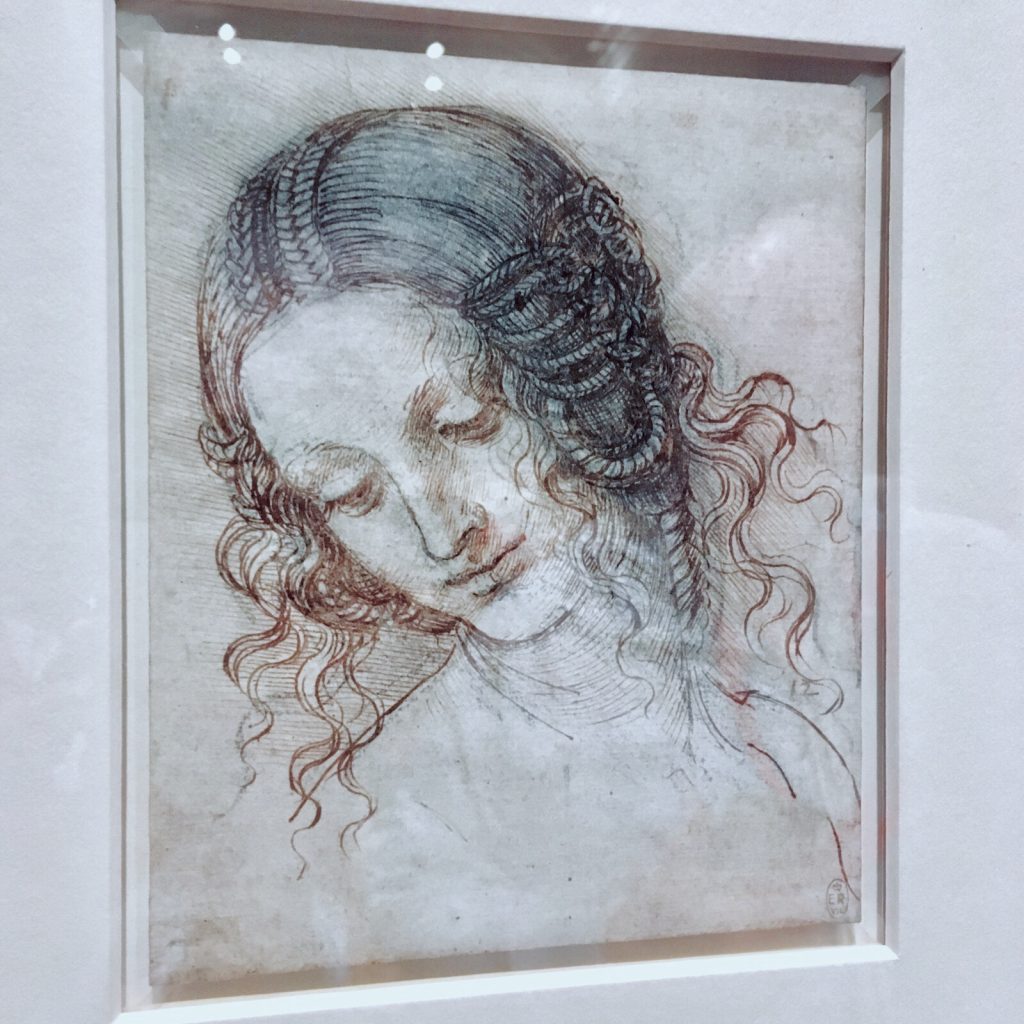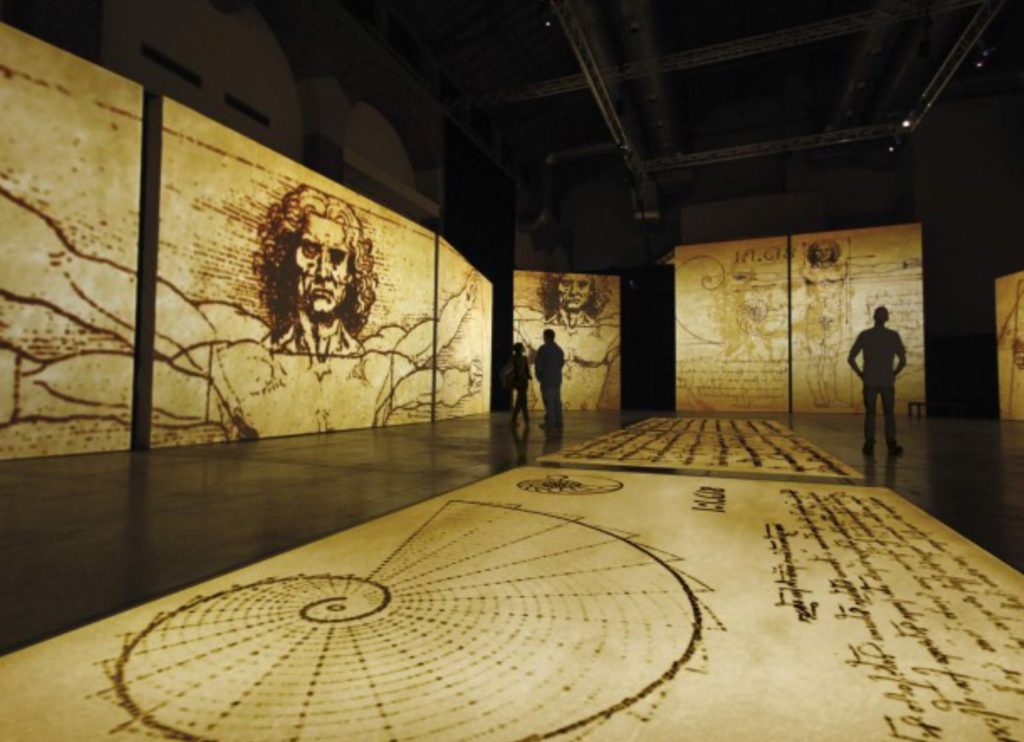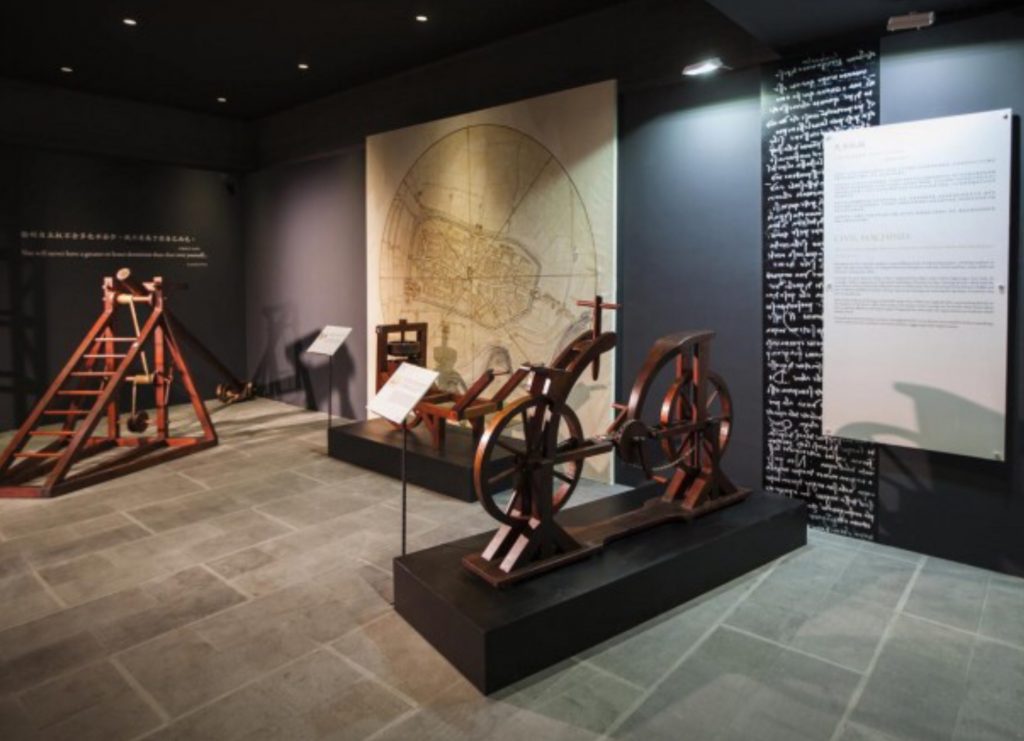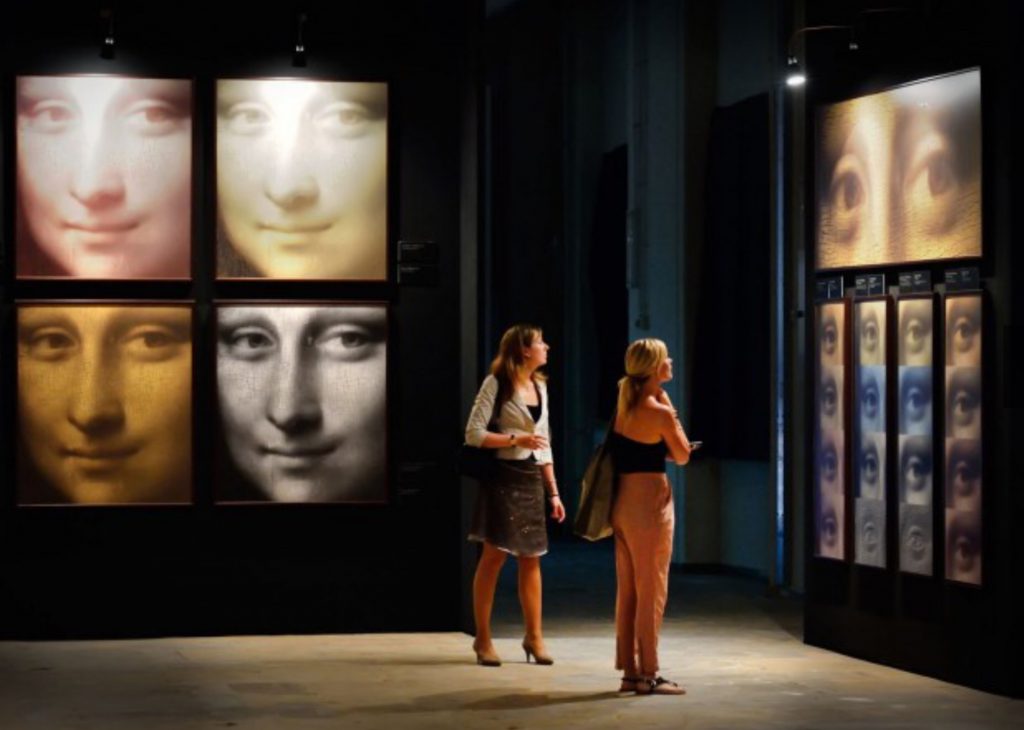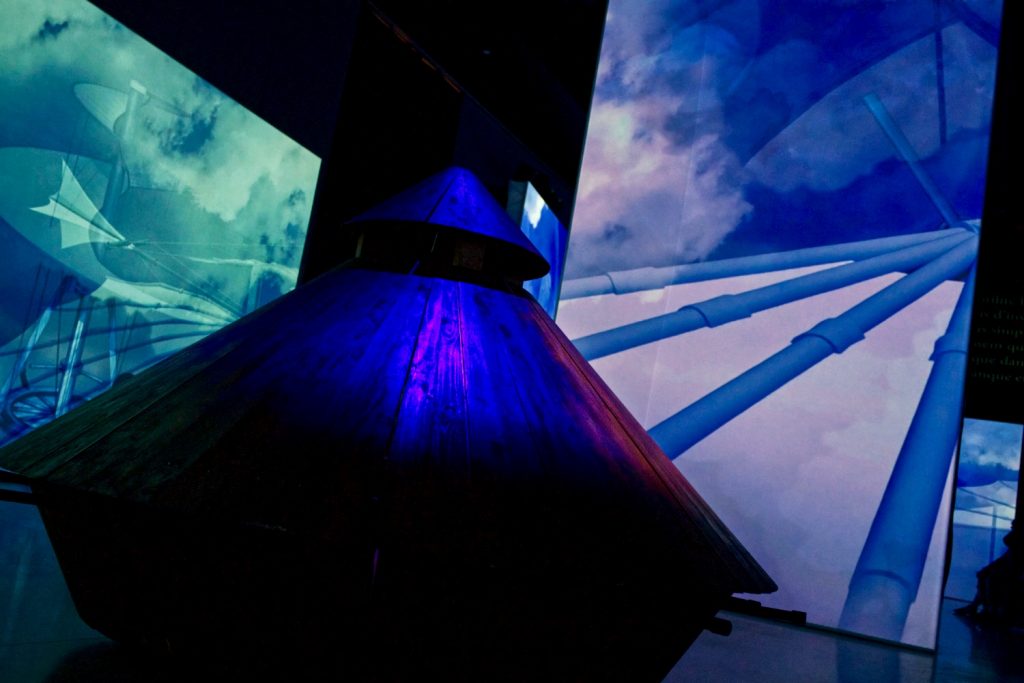2019 marked the 500th anniversary of Leonardo da Vinci’s death. Leonardo was not only one of the world’s greatest artists but also a brilliant scientist. He conducted in-depth studies of human anatomy, geometry, natural forces, clouds, plants, engineering, etc.
This article is about what comprised Leonardo’s genius, his approach to life and what we can learn from him. I’ll share some photos from both exhibitions, and then I’ll comment on Leonardo’s seven principles of life and what these have to do with creativity.
For Leonardo there could be no art without science. His artistic work started as a blend of scientific observation and careful experimentation. His original works are considered to be too priceless to be moved from their original locations. The “Vitruvian Man” is considered too fragile to even be on display.
I’ve included example drawings and studies of architecture, engineering, nature and the human figure. His drawings were never casually undertaken; they were used to devise new compositions, to capture fleeting impressions, to test his understanding, to force himself to look in minute detail, and to explore every possible variant of a scenario.
I visited London, England where I went to The Queen’s Gallery at Buckingham Palace to see “Leonardo da Vinci: A Life in Drawings”. A selection of the finest two hundred (of five hundred) drawings were beautifully displayed. They were originally assembled in what is known as “The Leoni Binding” (c.1580-1600) from the late sixteenth century. This became part of The Royal Collection in 1690. Here are some photos from the show:
This is the leather binding of the album made for Pompeo Leoni in the late sixteenth century to house over 500 of Leonardo’s drawings.
One of Leonardo’s many unrealized ambitions was to write a treatise on the art of painting. This drawing of a face in profile includes many notes on the action of light. In order to scientifically capture the effects of light and shade in paintings, here he investigates the way light from a single point falling onto a face is reflected at different angles.
I also went to the Canada Science and Technology Museum in Ottawa to see “Leonardo da Vinci – 500 Years of Genius”. This show commemorated 500 years of Leonardo’s legacy and was the most comprehensive exhibition experience on Leonardo da Vinci to tour the world as of 2019. It was created by Grande Exhibitions in collaboration with the Museo Leonardo da Vinci in Rome and a number of experts and historians from Italy and France.
Forgive this little tangent but… The museum building itself is quite spectacular. It is modern and incorporates oblique angles and coloured accents. There is also a large animated display surrounding the entrance.
Here are some photos from this exhibition:
Michael J. Gelb identified seven Leonardo da Vinci “principles” to live by that, collectively, form the basis of his genius. Gelb is an internationally recognized pioneer in the fields of creative thinking, accelerated learning and innovative leadership.
I have quoted and paraphrased some of Gelb’s writings below as well as commented on how each principle relates to visual creativity and how it may apply to an artist’s life.
** If you are enjoying this article, subscribe to receive information about my work and creative process, and also get access to my free ebook about becoming more creative.
After five centuries, Leonardo da Vinci reigns as an unsurpassed global symbol of human potential. Gelb believes that Leonardo da Vinci himself should inspire us to discover and explore our own capacity for genius in the art of living. Further, he believes that each of us is born with tremendous potential for creative expression, and Leonardo is the supreme role model for accessing and actualizing that gift. Learning and practicing the seven da Vinci principles can open up new channels of creativity, intellect, and passion in one’s life.
Principle 1: Curiosity (Curiosità)
Young children learn at an astonishing rate due to their profound, unrelenting curiosity. The foundation of genius is when this degree of curiosity continues throughout life. Leonardo possessed the openness and energy of a child combined with the focus and discipline of maturity. This is how he lived and approached his quest to find the essence of truth and beauty. Life happens in the moment. Unless you take the time to record life experiences, you’ll lose your genius-quality inspirations and ideas. Make the most of your life by recording your experiences.
How does this relate to creativity?
Being curious means being a keen observer. This trait is what drives exploration and is a necessary quality of being artistic.
How to benefit artistically from this?
Get out there. Explore new situations and places. Look around at all times and constantly explore different visual arrangements. Keep an open mind and use all the tools at your disposal to explore your subject matter and document your experiences.
Principle 2: Experience (Dimostrazione)
Leonardo had a commitment to test knowledge through experience, persistence, and a willingness to learn from mistakes. He came along after a 1000-year period when no one questioned anything, and he questioned everything, starting a revolution in the development of independent thinking.
How does this relate to creativity?
Artists need to question everything they see, feel and do in their ongoing quest to create. They must be analytical, persistent and consistent in their efforts. This principle is about achieving a high level of craftsmanship. It is what empowers artistic growth and facilitates success.
How to benefit artistically from this?
We learn from experience. There are no mistakes, only experiments. You need to attain and apply knowledge in any way you can. Plan to explore various ways of approaching your subject and, more importantly, make the attempts. Review your work, analyze results and consider how to improve. Go do it all again with a goal of demonstrating and applying what you’ve learned.
Principle 3: Sensory Refinement (Sensazione)
This refers to the continual refinement of the senses, especially sight, as the means to enliven experience. Leonardo had observed that the average person “looks without seeing, hears without listening, breathes in without awareness of aroma or fragrance, eats without tasting, touches without feeling, and talks without thinking!”. He believed that sensory awareness and refinement is the secret of savouring “la dolce vita” (the sweet, soulful life) and the key to becoming “sharper” and more creative.
How does this relate to creativity?
Being acutely aware of your surroundings, being able to see and visualize light, shapes and patterns, having a sense of what is in flux at any given moment and sensing motion, being able to draw visual associations between elements of a scene, being able to isolate meaning and understanding how to translate this visually…sounds like artist stuff to me.
How to benefit artistically from this?
This is about refining the way we see and visualize. This is accomplished through repeatedly reviewing our work. At times, we will observe something we previously hadn’t. Two effective ways to do this are to look at your work reflected in a mirror (laterally reversed) and to look at your work upside down (inverted). Often, the more we look, the more we see. This, in turn, becomes valuable knowledge that enhances our observational powers.
Principle 4: Ambiguity (Sfumato)
This refers to a willingness to embrace ambiguity, paradox, and uncertainty…living with courage. Sfumato is a term that art critics coined to refer to the hazy, mysterious quality in Leonardo’s paintings, a quality he achieved through the gossamer-thin application of hundreds of layers of paint so that the light seems to suffuse magically from behind the canvas. It represents one of the most distinctive characteristics of highly creative people like Leonardo himself: openness to the unknown and poise in the face of uncertainty. Remaining centred and balanced is often a challenge for many artists. Embracing Sfumato may be the hardest aspect of “da Vincian” thinking to integrate. It represents letting go of comforting (yet stifling) security blankets that many of us cling to for dear life.
How does this apply to being an artist?
Artists can create work and grow artistically by following certain principles; this does not, however, necessarily equate to successful visualization and results. There will be surprises and obstacles to overcome. When things aren’t going according to plan, artists must persevere and strive to work to completion despite any uncertainties or lack of motivation. It is important to finish work that we start. Finish work to the best of your abilities, analyze results and document any lessons learned. This can often be a challenge, but it is this struggle that empowers artistic growth. Push yourself out of your comfort zone, and don’t let uncertainty or ambiguity get in your way. Instead, use uncertainty to explore new territory and grow as an artist. Intuition is a major component of creativity. When we don’t trust our intuition, we potentially dismiss our greatest inspirations.
Principle 5: Balance (Arte/Scienza)
This refers to the achievement of a harmonious balance between science and art, logic and imagination: whole-brain thinking. Leonardo urged his students to “study the science of art and the art of science.” His claim to the title of the greatest genius of all time rests on his unmatched mastery of both science and art. The artistic mind has a foothold in both arenas.
How does this apply to being an artist?
Being an artist involves creativity and vision. An artist also has to be a good craftsman. Craftsmanship is more than technical knowledge and abilities—it refers to having mastered the tools and techniques of your craft (the point where your abilities are not constrained by either knowledge or skill). It is this degree of mastery that empowers and helps you realize your creativity and vision. Ensure that you dedicate portions of your time to being creative, planning work, making work, analyzing work, learning and also taking breaks from it all.
How does this apply to photographers?
It is interesting that photography is both art and science. Successful photographs require a degree of mastery of both. Due to the technical nature of photography, photographers are more technically challenged by their craft. This often results in being creatively constrained by their skill levels and forces them to have to dedicate a disproportionate amount of time to the technicalities of their craft at the expense of their artistic development. There are no breaks for photographers—take advantage of any free time and get out there and keep doing it.
Principle 6: Physical Wellness (Corporalita)
This refers to the cultivation of grace, ambidexterity, fitness, and poise. Leonardo gave advice on health and well being that is echoed today in writings on holistic health. He advocated moderate exercise, a diet of fresh, wholesome food (the Maestro was a vegetarian), and a little red wine with dinner. Leonardo understood all those years ago what we now call “the mind-body connection.” His most important advice on maintaining health and well-being included these words: “Avoid grievous moods and keep your mind cheerful.” Many artists struggle with achieving and maintaining a sense of well-being.
How does this apply to being an artist?
Stay focussed and be diligent working on your craft. If experiencing creative blocks or ruts, take a break. Getting some exercise can often do the trick. Artists also need a certain degree of self-mastery and stamina as creativity can strike at any time. Having the ability to keep going when required can be key to achieving creative goals. Being physically fit enables one to be prolific and productive.
Principle 7: Connection (Connessione)
This refers to a recognition of and appreciation for the interconnectedness of all things and phenomena; this is what we now refer to as “systems thinking”. As Leonardo searched for truth and beauty, he observed parallels in the flow of water, the movement of wind, the flight of birds, and the refraction of light. He noted that everything connects to everything else. The ability to see connections that others don’t is a hallmark of genius, and Leonardo offers a supreme example of this creative capacity.
How does this apply to being an artist?
Artists should always be mindful of patterns in their work. Identifying these can lead to new creative ideas and fresh approaches that empower creativity. It is important to work in series or projects that explore a theme or approach where specific creative constraints or elements define a group of works. Seek inspiration everywhere, be observant and patient. Record all of your ideas and revisit them. Working in this way also empowers artistic growth.
More from Michael Gelb…
He claims that learning and practicing the seven da Vinci principles can open up new channels of creativity, intellect, and passion in one’s life. He believes that Leonardo’s approach confirms many of our strongest intuitions about how to access our own potential.
The idea of “genius thinking” can seem somewhat daunting but he believes that it’s easier to apply than we tend to think and that the way to do this is through “careful cultivation” of our own creative genius by following Leonardo’s principles which define his approach to life.
In addition to his Mona Lisa, Adoration of the Magi, and The Last Supper, which are universally acclaimed as among the greatest paintings ever created, Leonardo’s anatomical, botanical, and geological sketches are masterpieces of both art and science.
Leonardo’s imagination took him up into the sky; he conceived a remarkable flying machine, a prototypical helicopter, and a parachute to return safely from the air. Modern engineers confirm that Leonardo’s proportions for the parachute are functionally accurate, a truly marvellous example of thinking ahead. He designed ball bearings, the three-speed gearshift, automated looms, scissors, a bicycle, and the extendable ladder that fire departments still use today. His work in anatomy, hydraulics, botany, geology, and physics makes him a pioneer of modern science.
Along with Brunelleschi, Michelangelo, and other giants, Leonardo helped bring the Western world out of the Middle Ages and into the Renaissance. Our world is going through changes today that are even more dramatic than those Leonardo experienced. As we approach his 550th birthday, Leonardo reigns as an unsurpassed global symbol of human potential. He represents the Renaissance ideal of balance for us at a time when balance may be more elusive, yet more important, than ever.
If you found this article interesting, subscribe to receive information about my work and creative process, and also get access to my free ebook about becoming more creative.


